PROGRAM
Monday, Oct 3, 2022
8:00am – 9:00am
Registration & Exhibitors
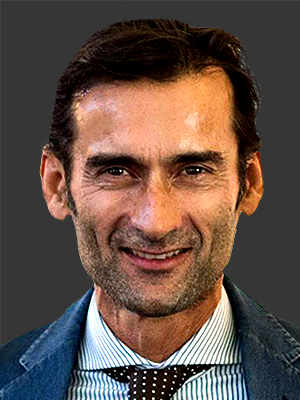
9:00am - 9:20AM
Welcome and Introduction to the 2022 Scientific Program
Dr Sascha A Jovanovic | Program Chair and Implant Surgeon, Los Angeles, California

9:20am– 10:30Am
Key Points in the Planning for Esthetic Success with Teeth and Implants
Dr Francesco Mintrone | Prosthodontist, Modena, Italy
Abstract
The lecture will focus on the fundamental points to obtain a natural and esthetic smile.
Starting from some basic concepts of esthetics in dentistry, the lecture will move to data acquisition from a traditional point of view to the use of cutting-edge technology for a digital approach.
The analysis of the data combined with a precise understanding of the biological concepts will create the foundation for ideal planning of our cases starting from the single tooth restoration to the full mouth rehabilitation.
10:30am – 11:00Am
Break
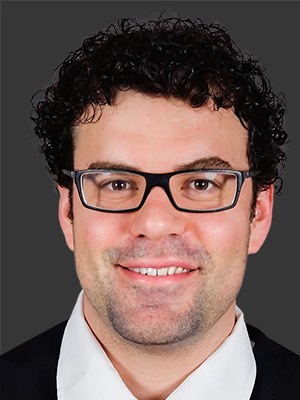
11:00am – 12:30pm
Use of Various Growth Factors in Regenerative Dentistry: Emdogain, Gem21 and BMP2
Dr Richard Miron | Periodontist, Miami, Florida
Abstract
New and innovative biomaterials are being discovered or created at an unprecedented rate, but many of them remain entirely foreign to practicing clinicians. This talk addresses the research over the years in the space of growth factor use in dentistry. The talk will present each growth factor from its development stages towards its clinical use and indications. Each will be presented with each growth factor being favored for specific uses in dentistry. Lastly, a sneak-peek at upcoming biomaterials and growth factors that have been in development over the past years, not yet clinical FDA approved, will be presented. This talk aims to educate clinicians on the how and why to utilize growth factors in an appropriate, predictable, and evidence-based manner.
Specific Aims
- Understanding Emdogain and its clinical applications in regenerative periodontology
- Understand the science behind how to correctly apply Emdogain on a root surface versus in combination with a bone grafting material
- Understanding recombinant human growth factors PDGF (Gem21) and BMP2 (Infuse) and their ability to speed tissue regeneration
- Comparative use of each of the above-mentioned growth factors for specific clinical indications
- Future growth factors including Tetranite and Hyaluronic Acid

12:30pm– 1:30pm
Lunch Break at Pacific Terrace
Lunch for Learning - Dental Documentation with Photography and Video
Dr Francesco Mintrone | Prosthodontist, Modena, Italy
Limited attendance - RSVP required.
Abstract
The goal of this lunch for learning is to improve the capacity of the participants to document cases.
First, we will analyze what type of documentation we need to present cases and how to document the different phases of our treatment.
From a photography point of view, we will understand what type of camera and lens is better to use.
Following we will evaluate how to obtain nice portraits and amazing intra-oral photos
Speaking about video recording we will evaluate the role of the light in the way to obtain high-quality videos.

1:30pm– 3:00pm
Dr Jovanovic Live Surgery - Implant Placement in the Esthetic Zone
Dr Sascha A Jovanovic | Program Chair and Implant Surgeon, Los Angeles, California
Dr Francesco Mintrone | Prothodontist, Modena, Italy
Abstract
In addition, a second patient will be presented and a digital full arch impression with the PIC system will be demonstrated.
3:00pm – 3:30pm
Break

3:30pm – 5:00pm
Understanding and Demystifying Platelet-Rich-Fibrin (PRF)
Dr Richard Miron | Periodontist, Miami, Florida
Abstract
The use of platelet concentrates has had a long history of use in various fields of medicine as an autologous source of growth factors fabricated utilizing centrifugation of blood under various conditions. Over the past 10 years, platelet rich fibrin (PRF) has seen a steady increase in utilization for a variety of medical procedures due to its lack of anti-coagulation factors favoring fibrin clot formation and faster wound healing. This talk aims to highlight the recent advancements made with respect to the newest formulations of platelet concentrates including recent developments in horizontal centrifugation. Thereafter, the Bio-Heat technology will be presented with an ability to extend the working properties of PRF from 2-3 weeks to 4-6 months. Lastly, new clinical applications and uses of PRF will be presented in periodontology and implant dentistry.
- Optimization of protocols for any centrifugation device
- Present advancements in the PRF field utilizing horizontal centrifugation
- Update on Bio-Heat technology and the ability to extend the working properties of PRF from 2-3 weeks to 4-6 months
- Launch of the Bio-Cool technology
5:30pm – 7:30pm
Welcome Reception for the 2022 Symposium at the Pacific Terrace with DJ SKU
* Daily Program Subject to Change
TUESDAY, Oct 4, 2022
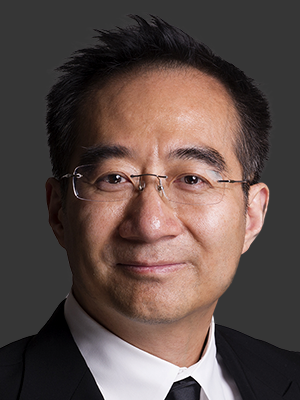
7:00am – 8:30am
HANDS-ON WORKSHOP (optional)
$399 | Free for Master Program Clinician Participants
Immediate Temporization in Extraction Sites
Dr. Joseph Kan, Prosthodontist | Loma Linda University, CA
9:00am – 12:30pm
AM Moderator - Dr Francesco Mintrone

9:00am – 10:30am
What makes Immediate Implants Successful and Esthetic?
Dr. Joseph Kan, Prosthodontist | Loma Linda University, CA
10:30am – 11:00am
Break
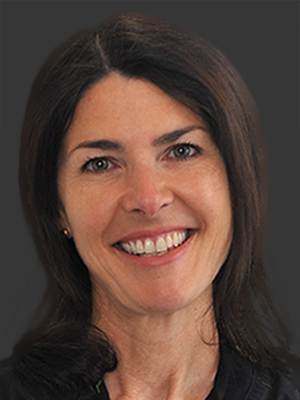
11:00AM – 12:30PM
Contemporary Implant Concepts - the Digital Workflow, Tissue Management & the Implant Portfolio
Dr Sonia Leziy, Periodontist, Vancouver, Canada
Abstract
Analog planning and treatment are still the norm for many general and specialty practices. However, there is increasing pressure from many directions to move into digital workflows. This is influencing how we document our cases, plan and execute treatment in orthodontic, surgical and restorative practices. The result is improved communication and better treatment outcomes. Along this progress vein, clinicians are also being presented with new/emerging surgical concepts and implants. This discussion will explore the application of Straumann’s™ implant and biologics portfolio, and a look at the features that support and improve multiple placement and restoration concepts.
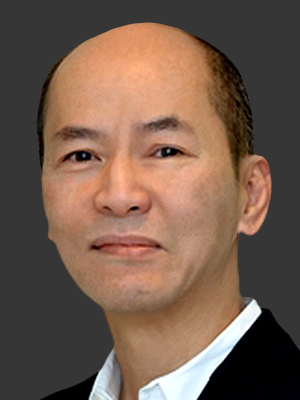
12:30pm – 1:30Pm
Lunch Break at Pacific Terrace
Lunch for Learning - What Socket Grafting Techniques are Predictable?
Dr Vinh Giap Nguyen, General Dentist | Brossard, Quebec
Limited attendance - RSVP required.
1:30pm – 5:00pm
PM Moderator - Dr Sascha Jovanovic

1:30Pm – 2:15Pm
Socket Shield Technique: Benefits, Risks and Long-term Results
Dr. Francesco Mintrone, Prosthodontist | Modena, Italy
Abstract
The IIPP technique (Immediate Implant Placement and Provisionalization) in the esthetic zone has become a popular approach. One of the main risks of this procedure is buccal recession due to the biological tissue remodeling after tooth extraction. One of the possible techniques to avoid buccal tissue alterations is to approach those cases with the SST (Socket Shield Technique).
In this lecture, we will evaluate the indications, the pros and cons, and a precise step-by-step of this innovative technique.

2:15pm – 3:00pm
Periosteal Inhibition: a Novel Concept for Socket Preservation and Its Application in Immediate Implant Therapy
Dr Vinh Giap Nguyen, General Dentist | Brossard, Quebec
Abstract
The Periosteal Inhibition technique for alveolar ridge preservation involves placing a high-density polytetrafluoroethylene (d-PTFE) membrane between the periosteum and the buccal bone plate of an extraction socket. The authors hypothesize that the non-resorbable d-PTFE membrane, because of its much smaller pore diameter as compared to the size of the osteoclast precursor cells, inhibits the migration of the osteoclast precursor cells from the periosteum to the bony surface and, subsequently, their fusion to form osteoclasts. As a result, osteolytic activity on the outer surface of the socket is inhibited.
The Periosteal Inhibition technique for alveolar ridge preservation is presented along with immediate implant treatment results using this treatment concept.
3:00Pm – 3:30Pm
Break

3:30Pm – 5:00Pm
New Innovative Approaches to Restore the Natural Smile of our Patients using Minimally Invasive Dentistry
Dr. Francesco Mintrone, Prosthodontist | Modena, Italy
Abstract
This lecture will present the innovations in dental materials and adhesive cement which have drastically changed the prosthetic rehabilitation on natural teeth and the approach to restorative procedures.
In addition, the lecture will present the modern workflow for an ideal esthetic and functional rehabilitation following minimal invasive dental preparations and will analyze the pros and cons of the digital and the traditional approach in order to improve our daily cases.
WEDNESDAY, Oct 5, 2022
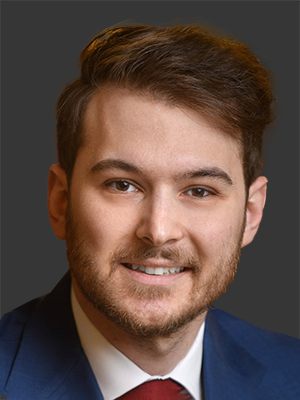
7:00am – 8:30am
HANDS-ON WORKSHOP (optional)
$399 | Free for Master Program Clinician Participants
Soft Tissue Management at Dental Implant Sites
Dr Lorenzo Tavelli, Periodontist | Harvard University, Cambridge, MA
Abstract
The workshop will focus on the management of peri-implant soft tissue and the use of autogenous grafts and collagen matrices around dental implants.
Different flap techniques, including coronally advanced flap, the surgical-prosthetic approach, tunnel technique and the strip gingival graft approach, among others, will be performed on plastic models where participants will learn how to choose and execute the surgical approach of choice for the treatment of implant esthetic complications, volume deficiencies and lack of keratinized mucosa. Participants will get familiar with the indications, handling and stabilization of collagen matrices at implant sites.
9:00am – 12:30pm
AM Moderator - Dr Francesco Mintrone
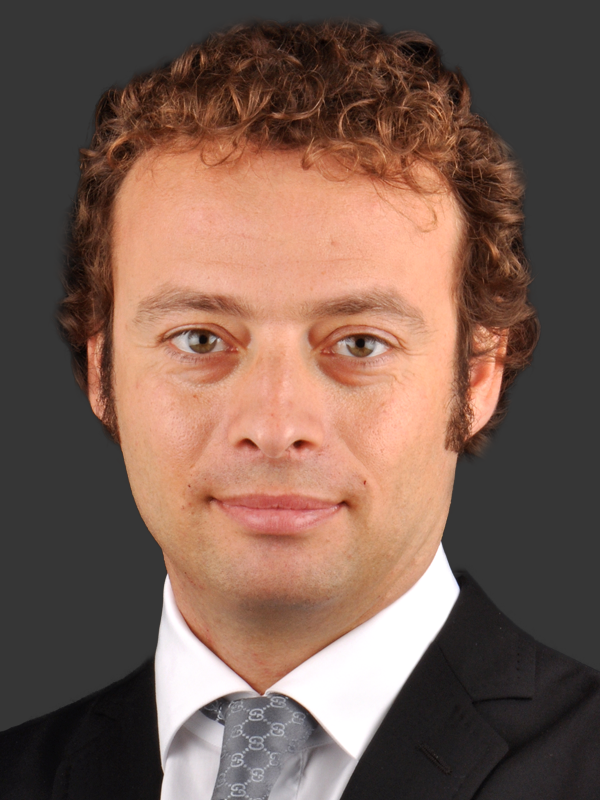
9:00am – 10:30am
Prosthetic Nightmare on Implants: It’s what not to do in the Biological Space
Dr Giacomo Fabbri, Prosthodontist | Cattolica, Italy
Abstract
The emergence profile is a crucial factor to facilitate favorable esthetic outcomes and maintain peri-implant health and stability. It should be evaluated not simply in terms of morphology but as a clinical variable closely related to materials properties, surface chemistry and clinical approaches; in this way, it is possible to achieve comprehensive planning of this critical factor that can influence significantly the integration, stability and preservation of bone and soft tissues. Soft tissue integration and adherence onto prosthetic components represent paramount elements to preserve and protect bone from contamination and infection. The lecture is conceived to present a prosthetic concept suggested as an operative strategy to preserve peri-implant hard and soft tissues and achieve predictable prosthetic outcomes optimizing soft tissue integration. A comprehensive evaluation of the emergence profile around dental implants to achieve ideal soft tissues adherence branches out into 3 main topics that can be listed in: 1) material, including biocompatibility, decontamination and surface chemistry and quality; 2) morphology, considering the design in the critical and sub-critical area; and 3) clinical approach that included surgical and prosthetic aspects. Educational objective: At the end of this session, participants will be able to discuss treatment approaches and component selection to promote soft tissue healing and stable biological outcomes.
10:30am – 11:00am
Break

11:00am – 12:30Pm
Novel Concepts for Minimally Invasive Treatment of Soft Tissue Deformities in Natural Dentition
Dr Lorenzo Tavelli, Periodontist | Harvard University, Cambridge, MA
Abstract
Root coverage procedures have been performed for decades with satisfying results. Autogenous connective tissue graft has been considered the standard of care when treating single and multiple gingival recessions. Nevertheless, advancements in biomaterials, surgical instruments and techniques have allowed the development of novel, patient-centered, and minimally invasive approaches for the treatment of gingival recessions. The lecture will present the state-of-the-art of root coverage procedures, highlighting the importance of flap design, the indications for autogenous connective tissue graft, and when and how is possible to use graft substitutes.

12:30pm – 1:30Pm
Lunch Break at Pacific Terrace
Lunch for Learning - Mucointegration and Implant System Design
Dr Giacomo Fabbri, Prosthodontist | Cattolica, Italy
Limited attendance - RSVP required.
1:30pm – 5:00pm
PM Moderator - Dr Sascha Jovanovic

1:30pm – 3:00Pm
Implant Esthetic Soft Tissue Complications. And now?
Dr Lorenzo Tavelli, Periodontist | Harvard University, Cambridge, MA
Abstract
Dental implants are reliable options for rehabilitating edentulous areas and replacing hopeless dentitions.
Nevertheless, implant esthetic complications are not uncommon. These conditions can negatively affect patients' perception of implant therapy and their quality of life.
The lecture will present the novel classification of peri-implant soft tissue dehiscences and will provide treatment recommendations for the possible case scenarios.
3:00Pm – 3:30Pm
Break

3:30pm – 5:00pm
5-year Clinical Experience with Bonded Zirconia Minimal Invasive Restorations: the New Normality?
Dr Giacomo Fabbri, Prosthodontist | Cattolica, Italy
Abstract
The prosthetic treatment plan must allow an ideal integration of esthetics, biologics and functional requirements on natural teeth and on implants. In the last 20 years the technology, the new components and the new materials have revolutionized the traditional approaches, introducing steadily new digital instruments year after year: Cad/Cam technology, guided implant surgery and innovative digital tools for diagnosis, planning and treatment. All these innovations have influenced significantly the clinical and technical workflow both in case of teeth-supported and implant-based rehabilitations. Concerning teeth supported prosthesis the key point is the minimal invasive prosthetic approach and its integration with a digital workflow. Minimal invasive prosthetic procedures can be performed not only in case of full mouth rehabilitation but also considering simple crowns and bridges. In fact today with a correct preparation technique is possible to preserve sound tooth structure and also enamel in many clinical situations. This procedure combined with adhesive bond and a correct selection and use of the restorative material allows to achieve excellent result in term of integration and reliability of the final prosthetic outcome. Evolution of restorative materials and approaches offered the possibility to work with restoration with reduced thicknesses maintaining sound tooth structure and preserving the integrity of the natural tooth. In fact nowadays in case of well-preserved teeth, with a calibrate reduction and a specific clinical approach, it is possible to complete the preparation maintaining more then the 70% of enamel. The right selection of the restorative material is a crucial aspect and monolithic zirconia represents the most interesting option thanks to the possibility to manage it in really reduced thickness also the posterior segments. This aspect, combined to the important achievements about the chemical adhesion of the zirconia, opens a great scenario in terms of restorative techniques and clinical restorative options. This lecture is aiming to described a 7-year clinical experience with ultrathin bonded zirconia restorations placed in the anterior and posterior segments.
THURSDAY, Oct 6, 2022
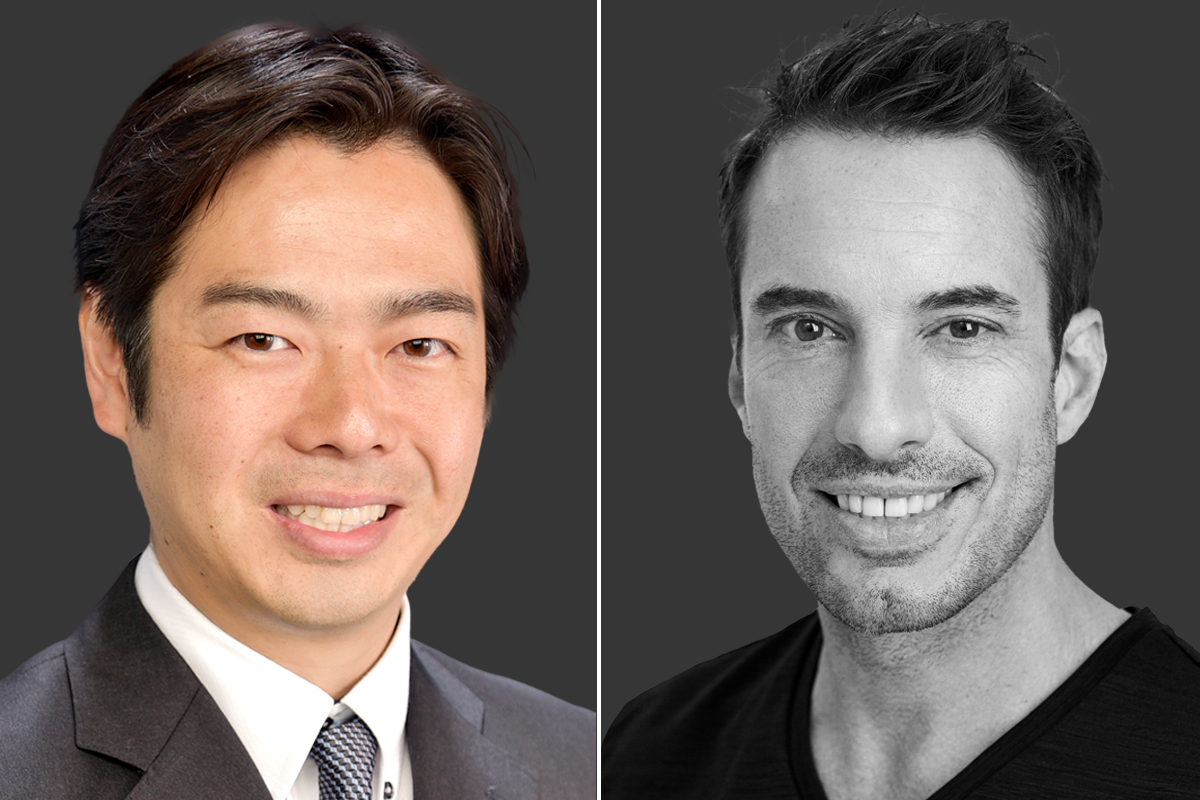
7:00am – 8:30am
HANDS-ON WORKSHOP (optional)
$399 | Free for Master Program Clinician Participants
Sinus Floor Elevation and Augmentation
Dr Ryuhei Yamanaka, Oral Surgeon | Tokyo, Japan
Dr Lars Pallessen, Oral Surgeon | Copenhagen, Denmark
Abstract
The workshop will focus on the management of the maxillary sinus using the lateral window and crestal osteotome technique. A special maxilla plastic model with an enlarged sinus anatomy will be used to practice the sinus bone cutting technique with a W&H surgical handpiece, W&H ultrasonic piezomed device and tips and Meisinger surgical burs. The sinus lift will be performed with hand instruments and grafted with a bone substitute and collagen membrane.
The participants will learn how to choose and execute the surgical approach of choice for the treatment of the maxillary sinus and manage the anatomy with different surgical equipment.
Participants will get familiar with the indications, handling and stabilization of bone graft and collagen matrices at implant sites.
9:00am – 12:30pm
AM Moderator - Dr Egon Euwe
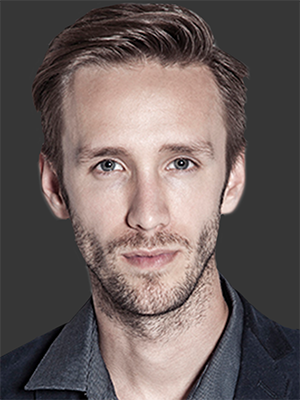
9:00am – 10:30am
AI In Practice: Artificial Intelligence, Real Dentistry
Dr Kyle Stanley, General Dentist | Los Angeles
Abstract
As AI brings its paradigm-shifting force to bear in dental care, however, few dentists have been given an honest accounting of how AI will actually impact their work––and fewer still have any first-hand experience of AI in their practices. This course aims to dispel the myths and mystery around AI’s current utility to dental offices with a boots-on-the-ground look at AI’s real-world impact on the clinical and business operations of practices currently employing the technology.
Learning objectives
-Understand the fundamental strengths and weaknesses of AI systems
-Discover what kinds of AI tools are currently available
-Level-set on the nature and scope of impact that these tools have on clinical care and practice management
-Understand and learn to avoid certain risks associated with AI tools
-Learn best practices for leveraging AI tools day-to-day to maximize patient health and practice revenue
10:30am – 11:00am
Break
11:00am – 12:30pm
Master Clinician Program Alumni Case Presentations with Panel Discussion
Dr Ian McAskill, General Dentist, Nova Scotia, Canada
Dr David Azar, General Dentist, New York City
with Panel Drs Jovanovic, Stanley and Euwe
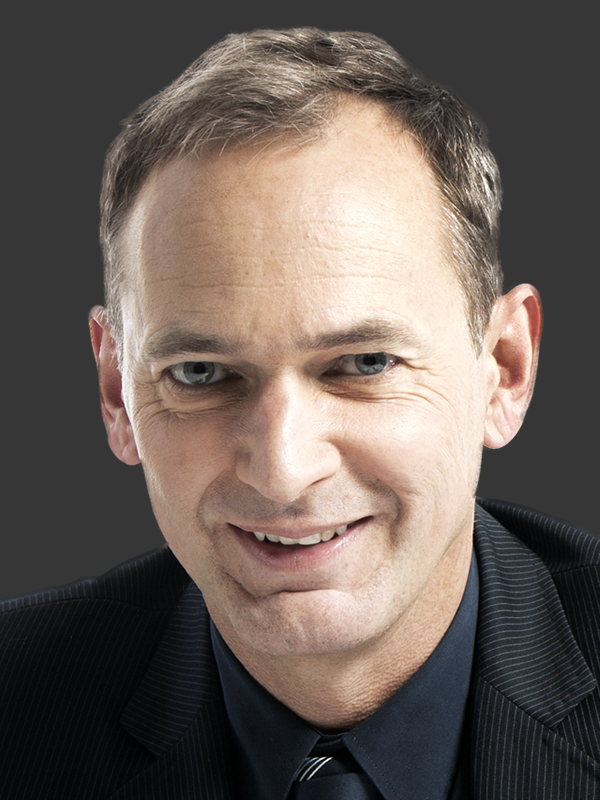
12:30pm – 1:30Pm
Lunch Break at Pacific Terrace
Lunch for Learning - How Implant Choice Selection Influences Zero Bone Loss Concept
Dr Egon Euwe, General Dentist | Milan, Italy
Limited attendance - RSVP required.
Abstract
How Implant Choice Selection has an impact on the Zero Bone Loss Concept.
In the past, the definition of a successful implant allowed around the neck of the fixture an initial “crater-like” bone loss pattern of less than 2 mm within the first year of loading. This was stated while observing the clinical behavior of the original Branemark implants.
Today we know that this can be improved.
At Present obtaining stable crestal bone levels are considered implantology at its best! To hit the “Zero Bone Loss Sweetspot” the clinician has to navigate through a maze of influential factors which can be divided into 3 groups: Hardware related factors, The Surgical part, and the Biological Hard and Soft Tissue dynamics.
The Lecture will provide a logical analysis of the impact of a well-designed modern implant system and a further roadmap towards hitting the Zero Bone Loss Sweet spot adding a lot of longevity to your clinical results!
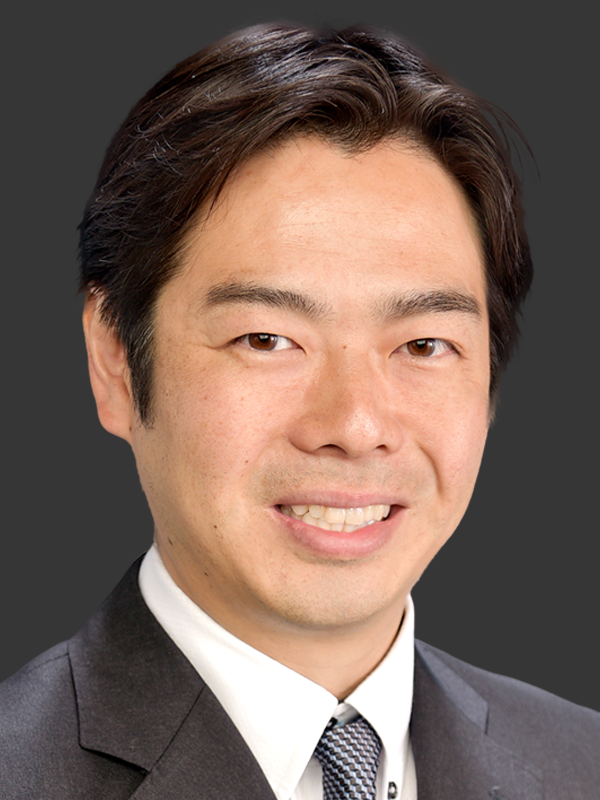
1:30pm – 2:15pm
Microsurgery with the Microscope: What are the Benefits on Hard and Soft Tissue Augmentation Procedures?
Dr Ryuhei Yamanaka, Oral Surgeon | Tokyo, Japan

2:15pm – 3:00pm
Advanced Ridge Augmentation and Implant Placement Protocol for the Deficient Anterior Ridge
Dr Sascha A Jovanovic | Program Chair and Implant Surgeon, Los Angeles, California
3:00pm – 3:30pm
Break
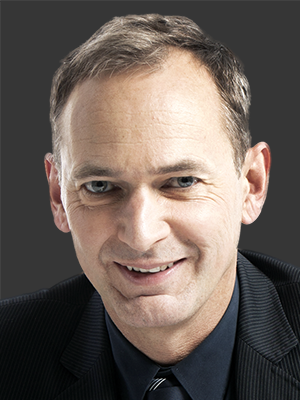
3:30pm – 5:00pm
Mastering the Esthetic Zone through Soft and Hard Skills
Dr Egon Euwe, General Dentist | Milan, Italy
Abstract
Revealing the hidden secrets of both the Extraction socket and the Transgingival part of the implant-supported Prostheses in the esthetic zone.
- A Proposal for Bio-friendly Tissue management and Prosthetic design
“Invisible Single Tooth Replacement” in the Esthetic zone has been considered for decades one of the pinnacles of Implantology. This procedure embraces surgical aspects of both hard and soft tissue preservation, reconstruction & remodeling. Implant, connection and abutment design play an important role as well, and recent Prosthodontic advances in the field metal-free CAD CAM technology with materials like Zirconia, Alumina and Lithium Di-Silicate created an Esthetic and Biological breakthrough. Going through the Gingival section from the neck of the implant towards the visible part of the Emerging tooth-like restoration, the team technician-clinician has to position up to four different interfaces between the different components and materials in this 3-4mm of running space. They have to widen also substantially the emergence profile going from a narrow connection (as small as 2.7mm!) to a much wider anatomical perimeter crossing different layers of soft tissue, every layer with its own specific characteristics and features. At the end of this process stable crestal and buccal bone Levels remain still today one of the most wanted features of successful implant treatment.
The lecture addresses the key elements on the way to excellence were the different pieces of carefully designed hardware have to respect the layer-specific tissue features to obtain long-lasting clinical stability. The often “unreliable” buccal wall of the extraction socket can lead to failures. The Soft Tissue dimensions necessary for hosting the Biologic width, a keratinized part attached to the bone as a “traction seal” and sheer volume for Esthetics and Rootmimetics very often have to be created surgically by the clinician. This can be done during various stages of the treatment, with numerous different procedures which are discussed in the lecture.
5:30pm – 7:30pm
Reception
FRIDAY, Oct 7, 2022
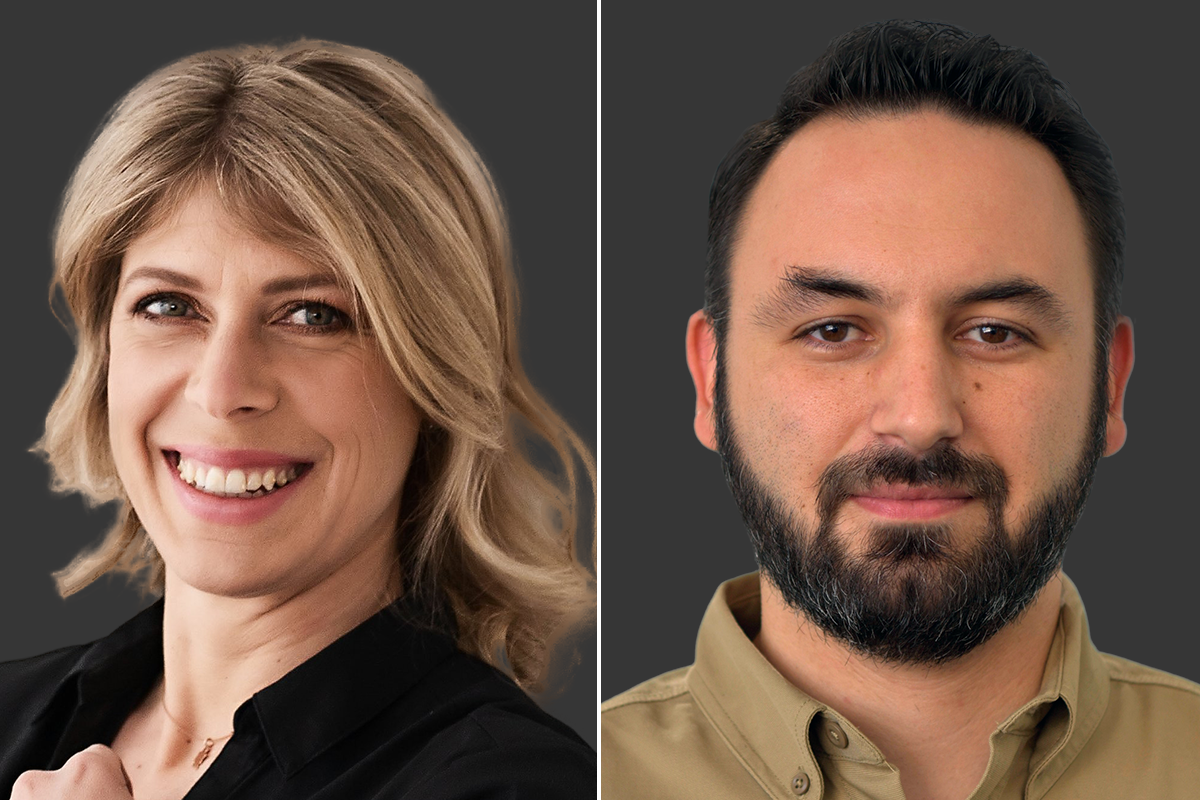
7:00am – 8:30am
HANDS-ON WORKSHOP (optional)
$399 | Free for Master Program Clinician Participants
Full Arch Solution - Surgical and Restorative Steps
Dr Natasa Gregoric, General Dentist | Ljubljana, Slovenia
Raffi Aghvinian, CDT | Natura-Like Dental Implant Studio, Santa Monica, CA
Abstract
In this workshop, the participants will get to work with a full arch lower jaw model that was planned to receive a bone reduction, guided 4 implant placements, and delivery of an immediate full arch temporary.
The workshop will allow the participants to work with a bone reduction guide and cut the needed jaw bone height with a piezo surgery unit. After the bone reduction 4 Straumann BLX implants will be placed with a 3D printed surgical guide and a preplanned digital denture delivered and modified to fit properly to the implants.
A further discussion and outlook will be presented to show the newest digital scan technology which can accurately and consistently digitally pick up the implant positions and allow for a fast turnaround of an immediate full arch temporary prostheses 3D printed or milled.
9:00am – 12:30pm
AM Moderator - Dr Egon Euwe
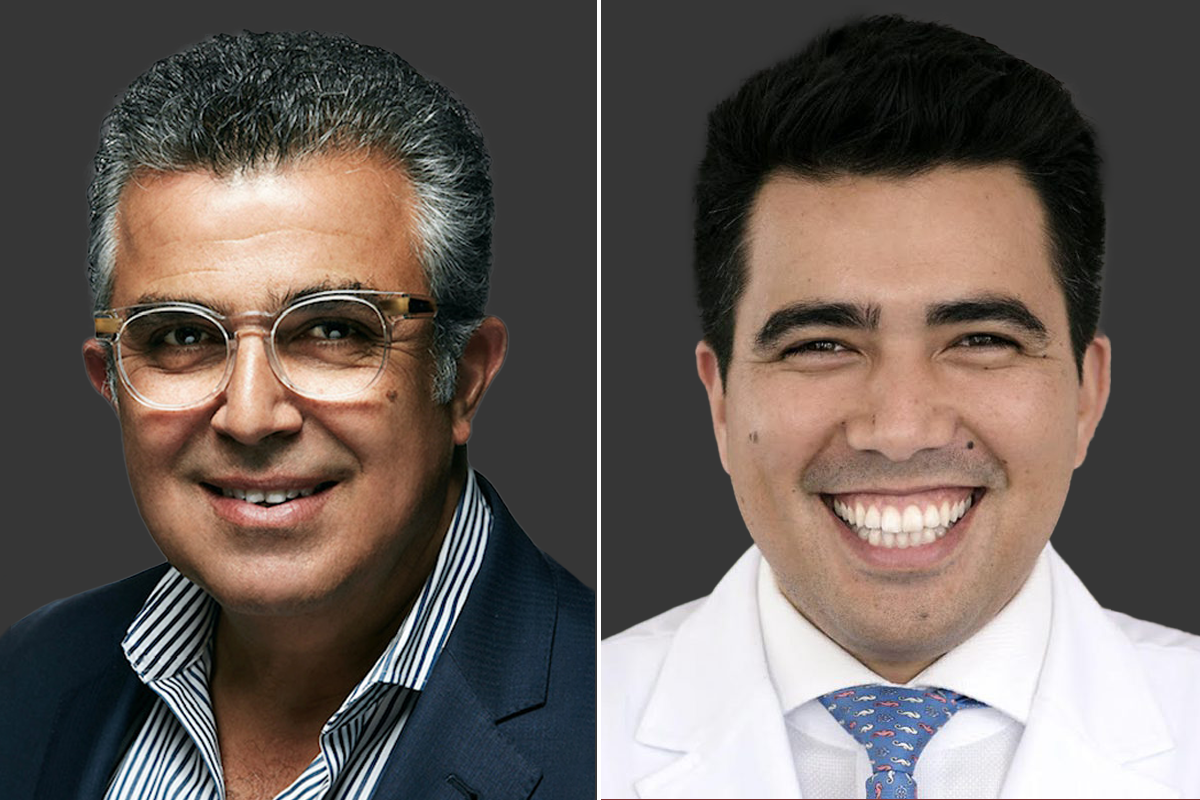
9:00am – 10:30am
Immediacy Concept I: Single to Full Arch Treatment Planning using the DIGILOG Concept
Dr Ed Bedrossian, Oral Maxillofacial Surgeon | San Francisco, CA
Dr Armand Bedrossian, Prosthodontist | San Francisco, CA
Abstract
A paradigm shift has taken place as the Graftless surgical approach has gained credibility. Reduced treatment time, a single-stage surgical reconstructions and immediate loading has resulted in a higher degree of case acceptance.
After extraction of a nonrestorable tooth, preservation of the soft and hard tissue volume is more predictable than is its reconstruction.
This presentation discusses the surgical as well as the prosthetic fundamental principles for predictable treatment planning for offering patients immediate implant and immediate provisional prosthesis where indicated.
For the terminal dentition patient or the existing fully edentulous patients, certain anatomic structures present barriers for immediate implant placement and immediate loading full arch reconstructions. In the maxilla, the volumetric loss of bone & soft tissues, enlarged maxillary sinuses, and presence of remaining compromised dentition pose unique surgical and restorative treatment challenges. In the mandible, the position of the mental foramen poses a challenge for reconstruction with a fixed prosthesis.
This presentation will discuss the number as well the distribution of implants for fabrication of an implant-supported fixed prosthesis. The use of the Zones of the Maxilla to determine whether axial, tilted, or zygoma implants may be indicated.
All cases will be treatment planned and executed using the DIGILOG concept; a hybrid of digital as well as the analog workflow.
The successful fabrication & delivery of fixed implant-supported prosthesis is dependent upon a systematic interplay between the surgical and prosthetic treatment planning objectives.
10:30am – 11:00am
Break

11:00am – 12:30pm
Immediacy Concept II: Single to Full Arch Treatment Planning using the DIGILOG Concept
Dr Ed Bedrossian, Oral Maxillofacial Surgeon | San Francisco, CA
Dr Armand Bedrossian, Prosthodontist | San Francisco, CA
Abstract
A paradigm shift has taken place as the Graftless surgical approach has gained credibility. Reduced treatment time, a single-stage surgical reconstructions and immediate loading has resulted in a higher degree of case acceptance.
After extraction of a nonrestorable tooth, preservation of the soft and hard tissue volume is more predictable than is its reconstruction.
This presentation discusses the surgical as well as the prosthetic fundamental principles for predictable treatment planning for offering patients immediate implant and immediate provisional prosthesis where indicated.
For the terminal dentition patient or the existing fully edentulous patients, certain anatomic structures present barriers for immediate implant placement and immediate loading full arch reconstructions. In the maxilla, the volumetric loss of bone & soft tissues, enlarged maxillary sinuses, and presence of remaining compromised dentition pose unique surgical and restorative treatment challenges. In the mandible, the position of the mental foramen poses a challenge for reconstruction with a fixed prosthesis.
This presentation will discuss the number as well the distribution of implants for fabrication of an implant-supported fixed prosthesis. The use of the Zones of the Maxilla to determine whether axial, tilted, or zygoma implants may be indicated.
All cases will be treatment planned and executed using the DIGILOG concept; a hybrid of digital as well as the analog workflow.
The successful fabrication & delivery of fixed implant-supported prosthesis is dependent upon a systematic interplay between the surgical and prosthetic treatment planning objectives.
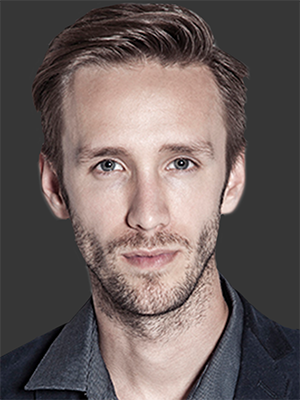
12:30pm – 1:30Pm
Lunch Break at Pacific Terrace
Lunch for Learning - What Have I Learned from Digital Smile Design and Digital Implant Planning that has Changed my Practice?
Dr Kyle Stanley, General Dentist | Los Angeles, CA
Limited attendance - RSVP required.
1:30pm – 3:00pm
PM Moderator - Dr Sascha Jovanovic
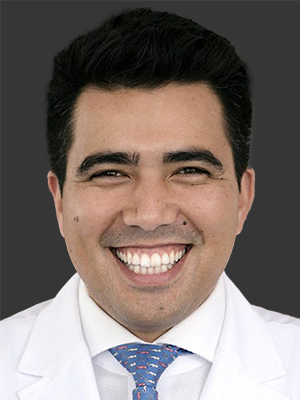
1:30pm – 2:15pm
Integrating Digital Technology into your Restorative Implant Practice
Dr Armand Bedrossian, Prosthodontist | San Francisco, CA
Abstract
As materials and workflows evolve into the digital realm, clinical practices may be enticed to embrace digital technology into their practices. As technology has shown to provide efficient and predictable treatment, fundamental knowledge of analog implant principles is imperative for a successful treatment outcome. This seminar will focus on the restorative aspects of implant dentistry, with a focus on traditional principles as well as implementing digital workflows for treatment planning, design, and manufacturing processes. We will walk through how to implement a digital workflow for various treatments, as well as review the current literature to support and rationalize when and how digital technology can or should be used. Cases from single unit implant therapy to digital dentures, to complete arch implant supported prostheses will be thoroughly examined in depth, demonstrating how a contemporary dental practice may implement digital technology for treatment planning, converting, and restoring the definitive complete arch implant prosthesis.
Learning Targets
- The traditional analog principles of restorative implant dentistry will be examined and how they lay the foundation for today’s digital world.
- The attendee will walk away with a confident knowledge of restorative materials and their indications for both the single unit implant prosthesis as well as for more complex multiple unit and full arch implant prosthesis.
- An emphasis will also focus on digital workflows for treatment planning, case design, and guide fabrication for the placement and restoration of single and multiple-unit cases. The attendee will walk away from this program with an understanding of the various digital workflows available to practitioners today, including laboratory-produced treatment plans and surgical guides as well as various chair-side and other collaborative options.
- Attendees will have the opportunity to review an A-Z workflow for the planning, converting and restoration of a complete arch implant prosthesis.

2:15pm – 3:00pm
Integrating Digital Technology into your Surgical Implant Practice
Dr Kyle Stanley, General Dentist | Los Angeles
Abstract
This presentation will showcase the digital workflow in partially edentulous patients, how to avoid problems and tips & tricks for implantology. Planning with a restoratively driven mind and understanding the anatomical limitations will make things more efficient for surgeons and restorative doctors so that the whole team benefits and patients get more predictable treatment.
• Learn how to utilize digital to get better final implant restorations
• Use the digital workflow to plan implant placement in partially edentulous patients
• Understand the biggest problems in implant dentistry and how to avoid them through proper planning
